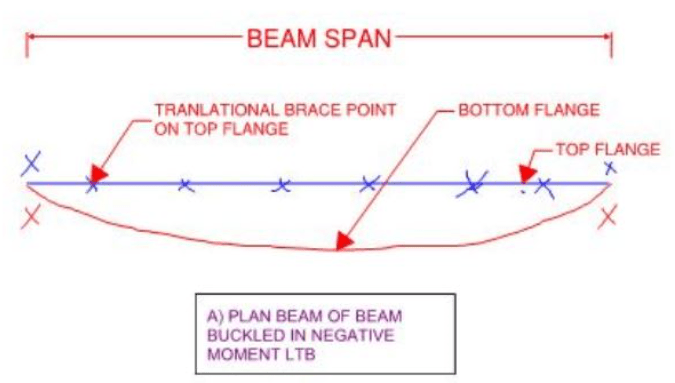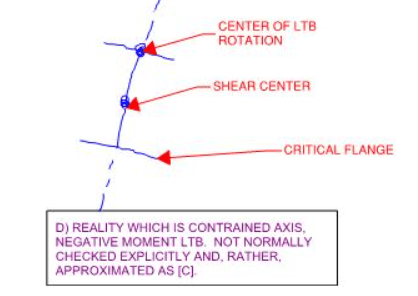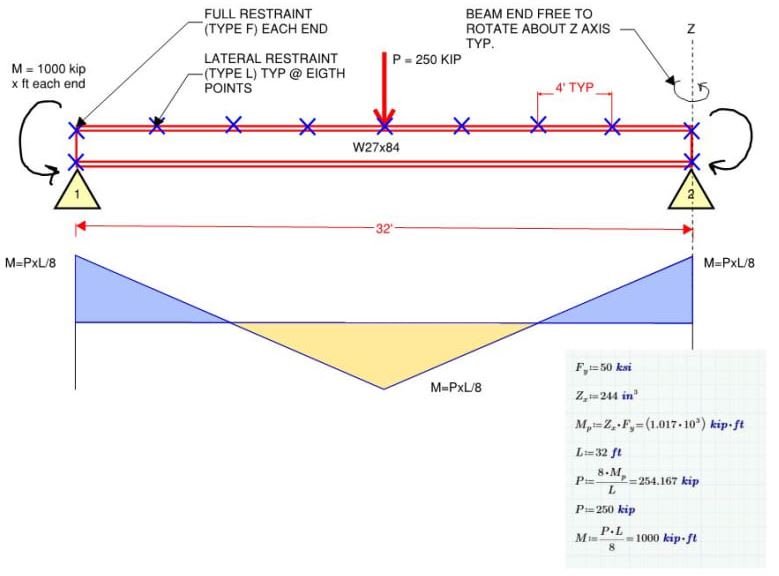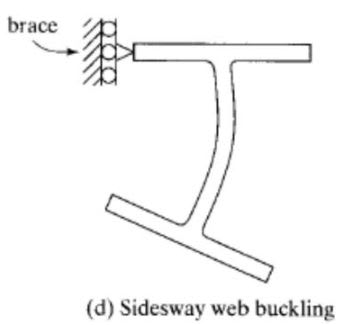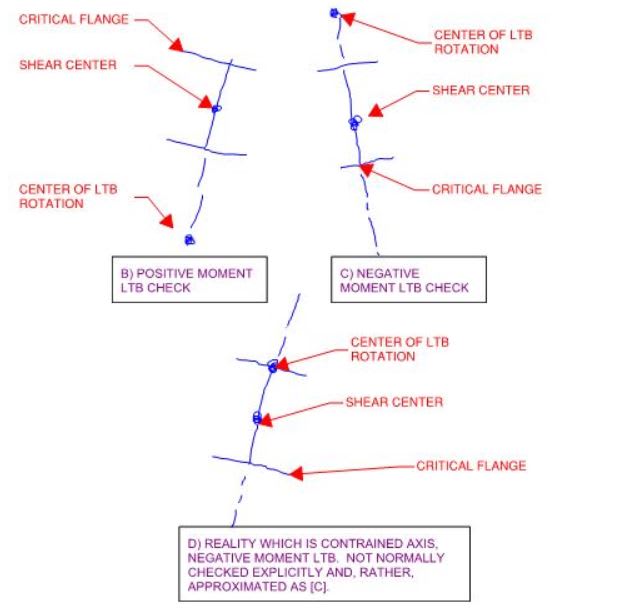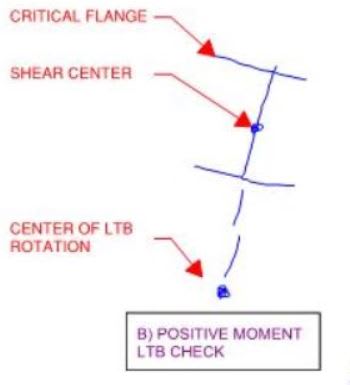Human909 said:
Your approach seems more thorough, though it isn't yet clear that much is gained from this thoroughness.
The AISC approach is a good deal
less thorough in my opinion. Relative to AS4100, I would describe it as more conservative and much simpler. Obviously, it's no surprise that those two features travel in tandem.
Human said:
You seem to be fixated on the bottom flange buckling mode. But in the examples discussed this buckling mode is many eigenvalues down the list and signficantly more difficult and unlikely to occur.
This is the part that strikes me as being hugely in error.
Of course I'm focused on the bottom flange bucking mode. Given that the top flange is effectively continuously braced,
there is no possibility of top flange buckling. So, in practical terms, is bottom flange buckling not the only mode of buckling in play here?
A challenge for you Human909: sketch me a single bucking mode that would be further up the list in terms of its eigenvalue and could possibly occur in the presence of the lateral restraints. Just one.
Human909 said:
As above you seem fixated on the notion that a codified buckling check needs to focus on ONE buckling mode. That is a bit useless really. You need a check (or many checks) that covers ALL buckling modes.
Yes! So consider:
1) In North America, being the ignoramuses that we are, we have an LTB checking procedure that checks just one lousy buckling mode at a time. We're the Homer Simpsons of LTB.
2) In AU,
apparently, you've devised an LTB checking procedure mode that somehow checks ALL buckling modes simultaneously. This is a pretty good trick.
Given this, just imagine how magical the AS4100 procedure seems to North American eyes? Just imagine how
badly we'd like to know how this magical procedure works??
But alas, so far no one has explained how it works so magically. And
that is why I keep asking questions targeted at finding out. Once I understand this piece of the puzzle, I suspect that most of the rest will just fall into place.
Given that your a practitioner of this incredible, all in one, LTB checking method, do you yourself not feel an onus of responsibility to understand how it manages to check all possible buckling modes in one go?
Don't get me wrong, my issue here is not that I question whether or not AS4100 LTB works. My issue is that I don't understand
how it works and, frankly, my impression thus far is that I am far from being alone in my ignorance. If you strip out my contributions, this thread reads something like:
-49% trying to interpret AS4100 clauses like the book of genesis.
-49% swapping FEM models to justify our interpretations of the book of genesis.
-2% discussing the actual theory behind AS4100 LTB methodology.
Does the dirth of theory talk not strike you as completely out of proportion here? It certainly does to me and I think that bespeaks an issued that I tabled earlier:
KootK said:
My impression here is that many of us, myself included, lack a cogent theoretical understanding of just how the AS4100 provisions work their magic. If we had such an understanding, I don't think that we'd be 160+ posts into trying to reconcile our differences on what should be entry level stuff. Instead, we'd just point to our cogent theoretical model and agree that "yup, it must be like this otherwise it wouldn't agree with the theory".
I'd hoped that statement would goad somebody into ponying up with a "screw you KootK, the theory is simple and HERE. IT. IS!". But no, just radio silence on that. Instead, everybody wants to keep telling me how simple AS4100 is to
apply. I don't care if it's bloody
Sesame Street simple to apply. If nobody actually understands the root theory that under pins the application, no amount of simplicity can rectify that in my opinion.

